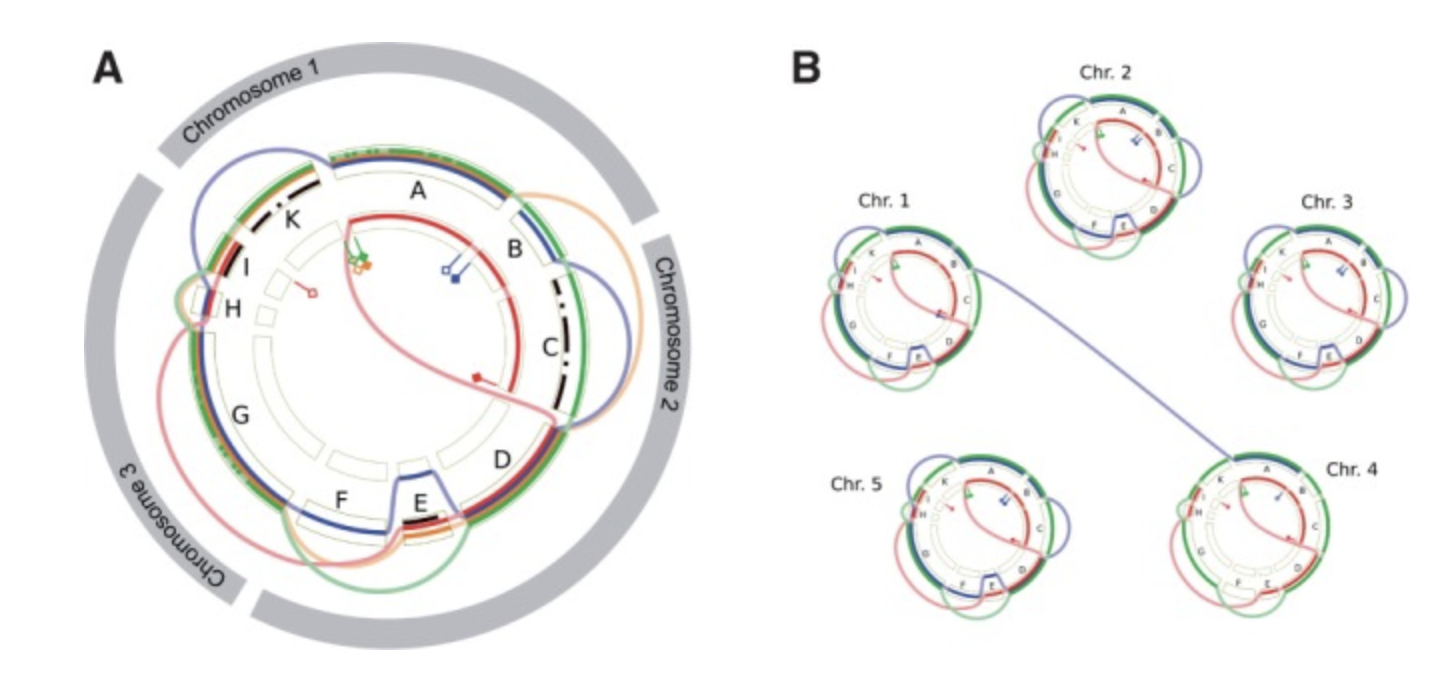GenomeRing
 https://www.ncbi.nlm.nih.gov/pmc/articles/PMC3371849/figure/F7/
https://www.ncbi.nlm.nih.gov/pmc/articles/PMC3371849/figure/F7/
Methods
circular single view single scale single focus segregated contiguous no abstraction no arrangement between interconnection segment sparse type segment contiguous typeTool
| Access Format | standalone app |
| Supported Files | other |
| License | GNU Lesser General Public License |
| Tool name | GenomeRing |
| Tool Link | https://www.wsi.uni-tuebingen.de/lehrstuehle/integrative-transkriptomik/software/genomering/ |
| Documentation | https://uni-tuebingen.de/index.php?eID=tx_securedownloads&p=156756&u=0&g=0&t=1564721933&hash=75c3bc2982100e01b583263ea77447020e61d401&file=/fileadmin/Uni_Tuebingen/Fakultaeten/InfoKogni/WSI/IntegTranskript/Softwareprojekte/GenomeRing/howto.pdf |
Paper
GenomeRing: alignment visualization based on SuperGenome coordinates
Herbig A, Jäger G, Battke F, Nieselt K. GenomeRing: alignment visualization based on SuperGenome coordinates. Bioinformatics. academic.oup.com; 2012;28: i7–15.
Abstract
Motivation: The number of completely sequenced genomes is continuously rising, allowing for comparative analyses of genomic variation. Such analyses are often based on whole-genome alignments to elucidate structural differences arising from insertions, deletions or from rearrangement events. Computational tools that can visualize genome alignments in a meaningful manner are needed to help researchers gain new insights into the underlying data. Such visualizations typically are either realized in a linear fashion as in genome browsers or by using a circular approach, where relationships between genomic regions are indicated by arcs. Both methods allow for the integration of additional information such as experimental data or annotations. However, providing a visualization that still allows for a quick and comprehensive interpretation of all important genomic variations together with various supplemental data, which may be highly heterogeneous, remains a challenge. Results: Here, we present two complementary approaches to tackle this problem. First, we propose the SuperGenome concept for the computation of a common coordinate system for all genomes in a multiple alignment. This coordinate system allows for the consistent placement of genome annotations in the presence of insertions, deletions and rearrangements. Second, we present the GenomeRing visualization that, based on the SuperGenome, creates an interactive overview visualization of the multiple genome alignment in a circular layout. We demonstrate our methods by applying them to an alignment of Campylobacter jejuni strains for the discovery of genomic islands as well as to an alignment of Helicobacter pylori, which we visualize in combination with gene expression data. Availability: GenomeRing and example data is available at http://it.inf.uni-tuebingen.de/software/genomering/